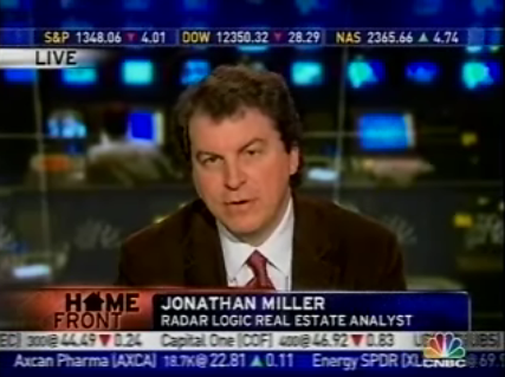
I got a last second call from CNBC to provide commentary on the stimulus plan, specifically how and increase in conforming loan limits for both the GSE’s and FHA helps housing, if at all.
The key point with the expansion of the loan limits is the potential increase in availability of mortgage products in higher priced home markets. Right now the east and west coasts have less representation in conforming loan pools because their price points are much higher. For example, the cost of living, specifically to housing in San Jose, CA is 5x as much as Cleveland, OH. This proposal could spread the access around. However, it also has the effect of restricting access in lower priced markets because the portfolio caps the GSEs abide by aren’t on the agenda to be raised. That limits the effectiveness of the expansion of loan limits (if you believe Fannie Mae and Freddie Mac can be receive adequate oversight).
OFHEO raises legitimate concerns about oversight of the GSE’s and the higher potential for risk. However, OFHEO was asleep at the switch when FNMA had accounting issues a few years back so I am not convinced OFHEO would be able to understand what changes would be needed to better oversee GSE actions. Also, any stimulus plan form needs to be implemented quickly or not at all. Government is not known for being nimble.
Interestingly, Diane Olick, who was interviewed in the above clip, mentions (via Housing Doom) that the Fannie Mae home page has changed in the past 2 years to reflect a different mission. I wonder if OFHEO understands what that change means?
The rate actions by the Fed this week and this expansion of loan limits, if passed, seem to push us in the right direction (symbolically and politically), in finding a solution to the weakening economyt. Much of the solution is correction and letting time go by.
In reality, its all about credit. So far, the symbolism in these gestures would go toward restoring confidence, but I suspect there is a long way to go.
5 Comments
Comments are closed.


Low rates and an increase in forbearance without a severe overhaul of regulation (nay, a mere implementation of regulation) is the opposite of the right direction.
It will only rekindle the bubble and lay the groundwork for a much worse calamity a few years down the line. Thankfully for the current administration, this will be after they are retired from office, and quietly hunting endangered species in Texas or lobbying for their campaign contributors. This is, naturally, the point.
L’Emmerdeur – good to hear from you again. I sort of agree with your point. I think the result of these efforts will merely soften the economic impact, rather than create a bubble down the road. I have always had an issue with the distribution of conforming mortgages. The existing national system has actually created more overall risk because the cost of living is higher on the coasts, fostering more creative financing. Also, banking regulation is in need of a severe overhaul, but that takes years and I still don’t think that the problems they created are understood on a federal level. Because of the lack of understanding of the impact of housing on the economy (5% direct of GDP, excluding any indirect influence, which is huge), action should have been taken about 12-18 months ago.
“The existing national system has actually created more overall risk because the cost of living is higher on the coasts, fostering more creative financing”
‘Creative financing’ meaning liar loans? I think about it from another point of view, that is that if household incomes are not able to support these home prices, instead of finding ‘creative’ ways to finance higher and higher prices, let prices adjust downward so household income can sustain the home prices, not the other way around.
Doug – thanks for the insight. yeah no doc “liar loans” defy logic from a risk standpoint. However, unless the cost of housing is exactly the same in every region of the country, your comments seem to suggest that creative financing makes up the difference between a low and high priced market, no?
Indeed creative financing does play an important part in financing where I am from, the San Francisco bay area. However, as the housing crisis has unfolded, I wouldn’t say it’s had a positive effect in terms of getting people into homes. Afterall, what’s the point if they’re just going to default a few years later due to ARM resets? Note that I’m not even talking about the abuse from liar loans. If the conforming limits varied by region years ago, I would not have a problem with that. However, introducing this right now (and temporarily at that) will have the effect of prolonging the housing crisis more than necessary.